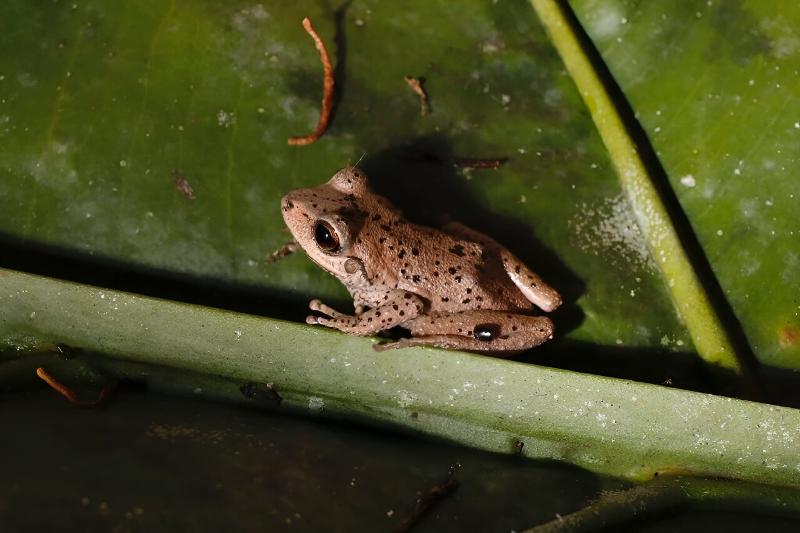Climate change has emerged as the primary threat to the survival of amphibians, the most vulnerable vertebrates on our planet. In this article, we delve into the devastating effects of climate change on these cold-blooded creatures and their delicate ecosystems. As a content writer, I am deeply concerned about the silent extinction of amphibians and the urgent need for action. Join me on this journey as we explore the impact of climate change on amphibians and the vital role they play in sustaining our planet's biodiversity.
The Vulnerability of Amphibians to Climate Change
Explore the unique vulnerability of amphibians to the effects of climate change and how it threatens their survival.
Amphibians, including frogs, toads, newts, and salamanders, are particularly susceptible to the impacts of climate change due to their unique biology and habitat requirements. As cold-blooded creatures, they rely on external sources of heat to regulate their body temperature, making them highly sensitive to changes in temperature and moisture levels.
Furthermore, amphibians have permeable skin, which allows them to breathe and absorb water directly through their skin. However, this also makes them more susceptible to dehydration and the loss of vital moisture in their habitats.
Climate change exacerbates these vulnerabilities by causing shifts in temperature and precipitation patterns, leading to habitat loss, reduced breeding opportunities, and increased susceptibility to diseases. These combined factors pose a significant threat to the survival of amphibians worldwide.
The Devastating Impact on Amphibian Habitats
Discover how climate change disrupts amphibian habitats, leading to the loss of critical breeding grounds and food sources.
Climate change disrupts amphibian habitats in various ways, with rising temperatures and altered precipitation patterns being the primary drivers of change. These shifts can lead to the loss of critical breeding grounds, such as ponds and wetlands, which are essential for amphibian reproduction.
Additionally, extreme weather events like storms and floods become more frequent and intense due to climate change. These events can destroy amphibian habitats, wash away eggs and tadpoles, and disrupt the delicate balance of their ecosystems.
Furthermore, changes in temperature and moisture levels can affect the availability of food sources for amphibians, such as insects and other invertebrates. This disruption in the food web can have cascading effects on the entire ecosystem.
The Alarming Decline of Amphibian Populations
Learn about the alarming decline of amphibian populations and the role of climate change in driving their extinction.
Amphibians have been experiencing a rapid decline in population numbers over the past few decades, with climate change emerging as a major contributing factor. According to recent studies, nearly 41% of amphibian species are globally threatened, a significant increase from previous assessments.
Climate change is responsible for 39% of the status declines observed between 2004 and 2022, affecting 119 species. The loss and degradation of habitats due to climate change, combined with other threats like disease and pollution, have pushed many amphibian species closer to the brink of extinction.
It is crucial to recognize the urgent need for conservation efforts and to address the underlying causes of climate change to prevent further declines in amphibian populations.
The Importance of Amphibians in Ecosystems
Discover the vital role of amphibians in sustaining ecosystems and the potential consequences of their extinction.
Amphibians play a crucial role in ecosystems, contributing to nutrient cycling, pest control, and maintaining a balanced food web. They serve as both predators and prey, controlling populations of insects and other invertebrates while also providing a food source for mammals, birds, and reptiles.
Furthermore, amphibians help to maintain the health of aquatic ecosystems by consuming algae and detritus, preventing excessive growth and maintaining water quality. Their presence also indicates the overall health of an ecosystem, making them important indicators of environmental quality and biodiversity.
If amphibians were to go extinct, the consequences would be far-reaching. The collapse of the food web, the loss of important ecological functions, and the disruption of nutrient cycling would have detrimental effects on the overall health and stability of ecosystems.
Urgent Action Needed: Protecting Amphibians and Combating Climate Change
Highlight the urgency of protecting amphibians and implementing measures to combat climate change for the sake of our planet's biodiversity.
The alarming decline of amphibians and the threats posed by climate change call for immediate action. Conservation efforts must focus on protecting and restoring amphibian habitats, ensuring the availability of breeding sites, and reducing pollution and other stressors.
Additionally, addressing the root causes of climate change is crucial. This involves reducing greenhouse gas emissions, transitioning to renewable energy sources, and implementing sustainable land management practices.
By investing in the protection of amphibians, we are safeguarding the health and resilience of our ecosystems. Their survival is intertwined with the well-being of countless other species, including humans. It is our responsibility to act now to preserve the incredible diversity of life on our planet.
Conclusion
Climate change poses a significant threat to the survival of amphibians, the most vulnerable vertebrates on our planet. Their unique biology and habitat requirements make them highly susceptible to the impacts of rising temperatures, altered precipitation patterns, and habitat loss.
To prevent further declines in amphibian populations and preserve the vital role they play in ecosystems, urgent action is needed. This includes protecting and restoring their habitats, reducing greenhouse gas emissions, and implementing sustainable land management practices.
By prioritizing the conservation of amphibians and combating climate change, we can safeguard the health and resilience of our ecosystems and ensure a sustainable future for all species, including humans.

